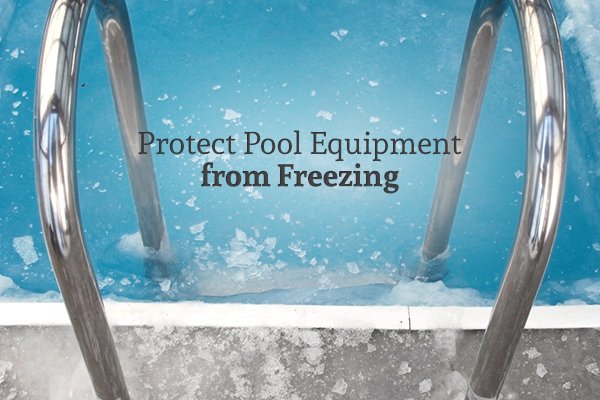
With the unforgiving months of winter upon us, now is the time for you as a pool owner to decide whether or not to winterize your pool and equipment. (While winterization is not usually necessary during a North Texas winter, recent history has shown us otherwise.) If the temperatures drop below freezing for a prolonged period of time, you could face the expensive hassle of dealing with frozen and damaged pool equipment.
Not sure where to begin when it comes to protecting your pool equipment from freezing? We’ve got some step-by-step tips to share!
Clean Your Pool Equipment
Start by making sure your pool equipment has been properly cleaned. This will help make the process of winterizing your pool a lot easier and will also save your equipment from being damaged while it is not in use over the winter.
Generally, you’ll want to start by cleaning your pool filter. The exact process here will vary depending on the type of filter you have. The three common types of pool filters include:
- cartridge
- sand
- diatomaceous Earth
For specific advice on cleaning your pool filter, check out our previous blog post here!
In addition to the pool filter, you’ll need to clean your skimmer. This will require you to take off the lid and remove the basket before scooping out all debris and rinsing to remove any remaining dirt. From there, remove any debris from the skimmer itself before replacing the basket and putting the lid back on.
Finally, clean your pool pump by shutting off the pump and pulling any large debris out of the basket directly.
Shut Off Your Pool Equipment
Once your pool equipment is all clean, you can shut it off and continue with the winterizing process. Shutting off all pool equipment is an important step because this will protect your equipment from unnecessary wear and tear; it will also help you save on your energy bills over the winter months while this equipment is not in use.
Lower the Water Level
Next, it’s time to lower the water level in your pool. Keep in mind, however, that you should not completely drain your pool while carrying out this step. Doing so could increase the risk of your pool shell cracking or the pool structure being pushed out of the ground due to groundwater pressure.
For the best results, you should drain your pool so that the water level hits just beneath the skimmer. You can do this using a submersible pump or even a simple garden hose.
Blow Water Out of the Pool Lines
Taking the time to remove water from your pool lines will protect your pool’s plumbing from freezing and therefore cracking. This is an important step because as water freezes, it expands; that expansion can exert undue pressure on your plumbing and lead to further issues. You can successfully blow water out of your pool lines by using an air compressor or shop vac.
To do this, begin by blowing air down the skimmer. Then, unscrew the drain plug on your pool pump and connect the air compressor or shop vac before continuing the air stream. Stop once you see bubbles coming out of the returns. You can use this same process to clear out pool heater lines if your pool is equipped with a heater.
Plug Up Return Lines
Next, use either expanding plugs or threaded plugs to close off the return lines on your pool. These are the openings that lead into the pool (not to be confused with your main drain or skimmer line). They’re typically found on the pool floor or along the lower parts of the pool wall.
Add Antifreeze
For added protection against freezing pipes, you may also want to add some antifreeze. Keep in mind that you should not use the same kind of antifreeze here that you would use in your car. Instead, you should buy specialized antifreeze made for pool plumbing which you can find at any pool supply store.
Remove Drain Plugs
Finally, be sure to remove the drain plugs from your pool’s pump, filter, and other equipment. The exact steps for removing these will vary from one manufacturer to the next, so check your owner’s manuals for further guidance. Be sure to store these plugs in a safe place for the following spring.
What Should I Do if My Pool is Already Frozen?
Sometimes, pool owners don’t get a chance to winterize their pools before the first big freeze hits. If your pool is already frozen over, there are some steps you should take to minimize damage.
Start by turning off power to your pool via your circuit breaker. Then, gather some thick wool blankets from your home and place them over your pool equipment. From there, you can set up a portable heater inside the blanket tent you’ve created to “thaw” things out. Just be sure to do this under careful supervision.
Once the equipment has thawed out, be sure to check for signs of damage, such as cracked pipes or busted connections.
Need Pool Winterization Help or Pool Equipment Repairs?
If you need any pool equipment repairs as a result of a frozen pool—or if you could use some help with winterizing your pool— Liquidus Pool Services has you covered. Contact us today to schedule your service!
